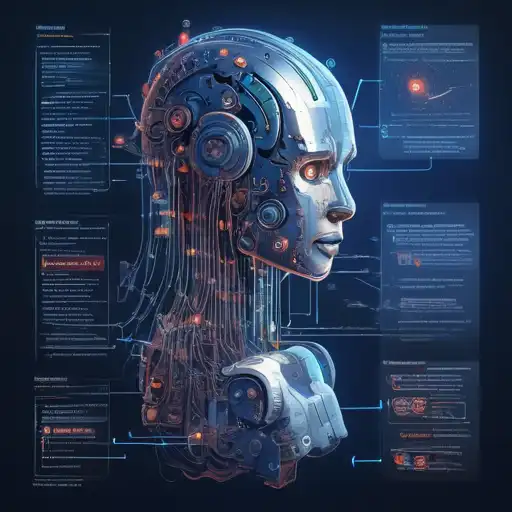Introduction to Machine Learning Algorithms
Machine learning algorithms are the backbone of artificial intelligence, enabling computers to learn from data and make decisions with minimal human intervention. For beginners, understanding these algorithms can seem daunting, but with the right approach, it's entirely achievable. This guide aims to demystify machine learning algorithms, providing a solid foundation for those new to the field.
Types of Machine Learning Algorithms
Machine learning algorithms can be broadly categorized into three types: supervised learning, unsupervised learning, and reinforcement learning. Each type serves different purposes and is suited to specific kinds of tasks.
- Supervised Learning: Algorithms learn from labeled data, making predictions based on past examples.
- Unsupervised Learning: Algorithms identify patterns in data without any pre-existing labels.
- Reinforcement Learning: Algorithms learn by interacting with an environment, receiving rewards or penalties for actions.
Popular Machine Learning Algorithms for Beginners
Here are some of the most popular machine learning algorithms that beginners should familiarize themselves with:
- Linear Regression: A simple algorithm for predicting a quantitative response.
- Logistic Regression: Used for classification problems, despite its name.
- Decision Trees: A versatile algorithm that can handle both classification and regression tasks.
- K-Nearest Neighbors (KNN): A simple, instance-based learning algorithm.
- Support Vector Machines (SVM): Effective in high-dimensional spaces.
How to Choose the Right Algorithm
Selecting the right machine learning algorithm depends on several factors, including the size and nature of your data, the problem you're trying to solve, and the computational resources available. Beginners should start with simpler algorithms and gradually move to more complex ones as they gain experience.
Practical Tips for Beginners
Starting with machine learning can be overwhelming, but here are some tips to help you on your journey:
- Start with foundational algorithms like linear and logistic regression.
- Practice on real-world datasets to gain hands-on experience.
- Join online communities and forums to learn from others.
- Take advantage of online courses and tutorials to build your knowledge.
Conclusion
Machine learning algorithms are powerful tools that can unlock the potential of data in ways previously unimaginable. By starting with the basics and gradually expanding your knowledge, you can begin to harness the power of these algorithms for your own projects. Remember, the journey to mastering machine learning is a marathon, not a sprint. With patience and persistence, anyone can learn to navigate the world of machine learning algorithms.
For more insights into machine learning and data science, explore our data science section.
